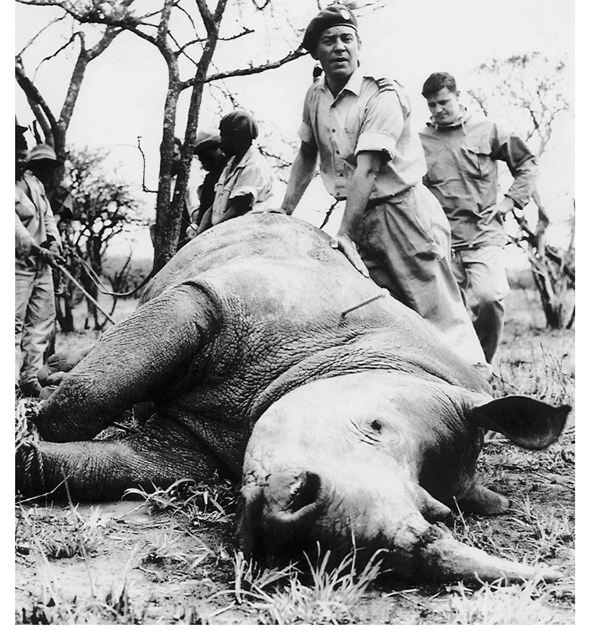
Article by: Zoliswa Nhleko, PhD candidate at the UF School of Natural Resources and Enviroment
White rhinos were formerly abundant in the Kruger National Park (KNP) till the 19th century when they were exterminated by hunters. In 1961 during Operation Rhino 4 individuals of breeding age were reintroduced into KNP. The reintroductions carried on for 12 years after the initial one and a total of 345 white rhino were reintroduced from Hluhluwe-Umfolozi Park
White rhinos flourished in KNP and this population became the largest and densest population of white rhino in the world. Then poaching escalated around 2007. Rhinos (both black and white) are poached for their horns. At the height of the poaching epidemic as many as 1000 rhinos were lost in a single year in South Africa.
My research:
If the current rates of poaching continue unabated the predicted population trends for the white rhino do not look too great. For my PhD research, I am interested in finding out how poaching has affected and will continue to affect white rhino i) demography, ii) distribution, iii) physiology and iv) behaviour. Hunting of any species that targets individuals of a specific age or sex has the potential to skew the age and sex structure of a population. These skews can have adverse effects on populations. By killing adult individuals this takes off the breeding portion of the population which slows down the growth rate of the population. For my research, I am looking at how changes in the age and sex structure will affect the viability of the population going forward.
 To investigate the effects of poaching on the rhino distribution, I am modelling the distribution in the years before poaching started and the years when poaching was happening. I want to see how the environmental drivers of rhino distribution have changed over the years. This will help us determine the environmental features important for white rhino survival and how poaching is and will continue to affect them.
To investigate the effects of poaching on the rhino distribution, I am modelling the distribution in the years before poaching started and the years when poaching was happening. I want to see how the environmental drivers of rhino distribution have changed over the years. This will help us determine the environmental features important for white rhino survival and how poaching is and will continue to affect them.
To investigate whether poaching has any physiological effects on rhinos, I am collecting white rhino poop from different populations with varying levels of poaching. I will compare the cortisol levels in these samples. Using animal dung samples is a non-invasive method for investigating cortisol levels. The samples are collected as fresh as possible, frozen until ready to be analysed in an the lab
To investigate how poaching may be altering rhino behaviour, I designed a playback experiment. I set up a speaker and a camera trap at rhino middens (communal toilets). For the control the speakers were playing common bird sounds and for the treatment I had them set to play human voices in the languages common to the area. I wanted to see if rhinos became more vigilant in areas with high human presence (treatment) versus other areas.
Unfortunately I can't provide any results for my research yet because nothing has been published. I am hoping that my findings can help save the rhino population. Please read this month's Biodiversity Spotlight to learn more about the rhinos in Africa, especially the white rhino.
About Writer
 In January, iDigBio partnered with TESI and the Florida Museum on the SciComm 101 Workshop for University of Florida graduate students. Each participant pledged to partake in a digital storytelling opportunity.
In January, iDigBio partnered with TESI and the Florida Museum on the SciComm 101 Workshop for University of Florida graduate students. Each participant pledged to partake in a digital storytelling opportunity.



